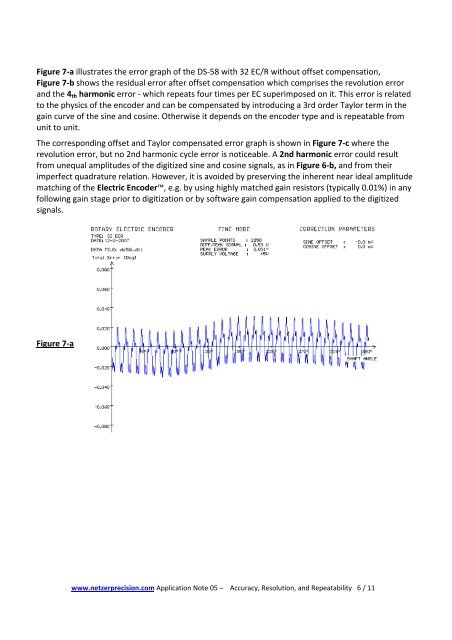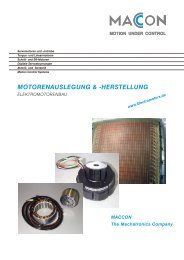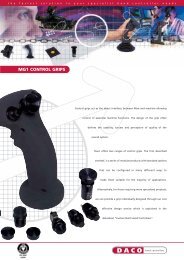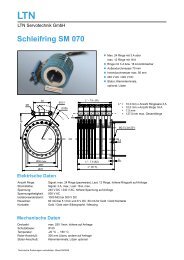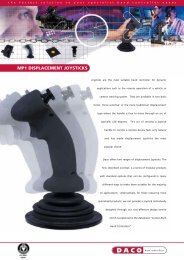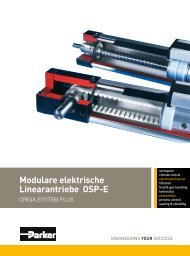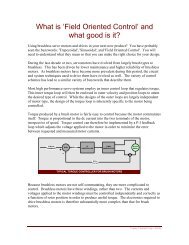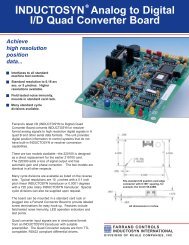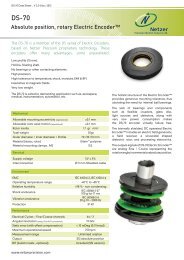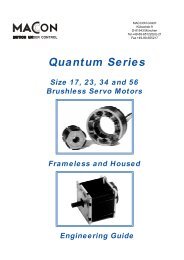AN-05;Accuracy, Resolution, and Repeatability - Netzer
AN-05;Accuracy, Resolution, and Repeatability - Netzer
AN-05;Accuracy, Resolution, and Repeatability - Netzer
- No tags were found...
You also want an ePaper? Increase the reach of your titles
YUMPU automatically turns print PDFs into web optimized ePapers that Google loves.
Figure 7‐a illustrates the error graph of the DS‐58 with 32 EC/R without offset compensation,Figure 7‐b shows the residual error after offset compensation which comprises the revolution error<strong>and</strong> the 4 th harmonic error ‐ which repeats four times per EC superimposed on it. This error is relatedto the physics of the encoder <strong>and</strong> can be compensated by introducing a 3rd order Taylor term in thegain curve of the sine <strong>and</strong> cosine. Otherwise it depends on the encoder type <strong>and</strong> is repeatable fromunit to unit.The corresponding offset <strong>and</strong> Taylor compensated error graph is shown in Figure 7‐c where therevolution error, but no 2nd harmonic cycle error is noticeable. A 2nd harmonic error could resultfrom unequal amplitudes of the digitized sine <strong>and</strong> cosine signals, as in Figure 6‐b, <strong>and</strong> from theirimperfect quadrature relation. However, it is avoided by preserving the inherent near ideal amplitudematching of the Electric Encoder, e.g. by using highly matched gain resistors (typically 0.01%) in anyfollowing gain stage prior to digitization or by software gain compensation applied to the digitizedsignals.Figure 7‐awww.netzerprecision.com Application Note <strong>05</strong> – <strong>Accuracy</strong>, <strong>Resolution</strong>, <strong>and</strong> <strong>Repeatability</strong> 6 / 11


